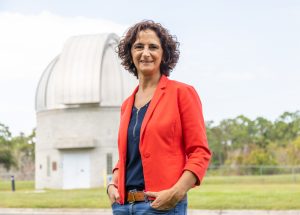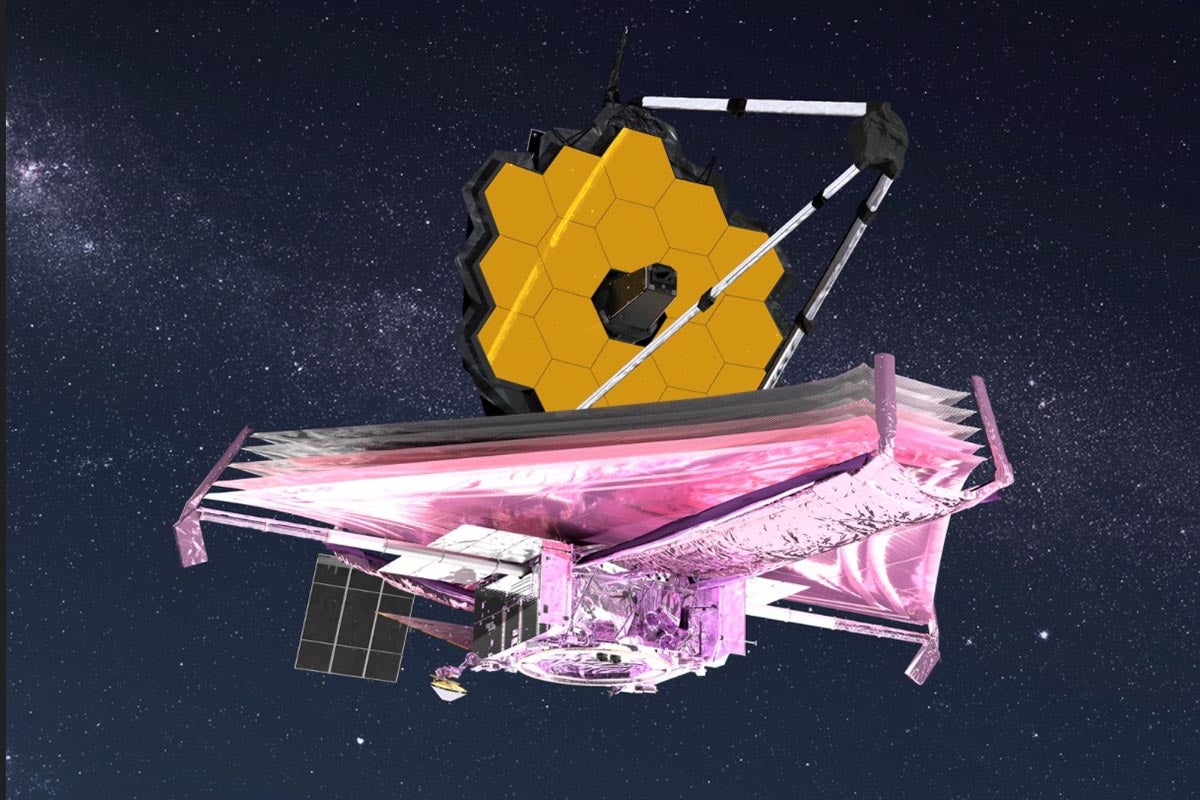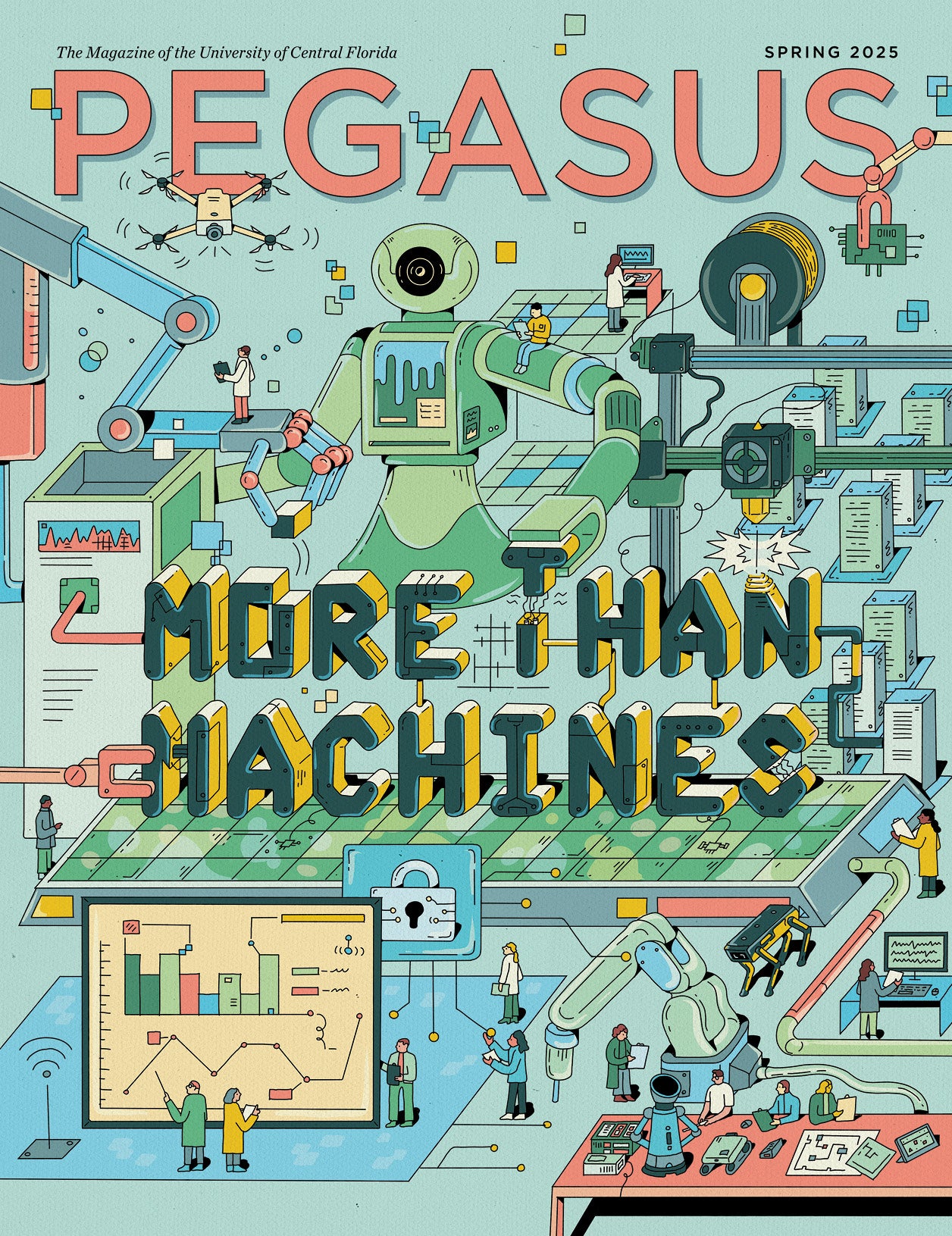Planetary Scientist Noemi Pinilla-Alonso has become addicted to NASA TV because of its live feeds of the James Webb Space Telescope mission.
The telescope, more than 20 years in the making and after multiple delays, launched on Dec. 25, 2021. The telescope is traveling quickly to reach its destination — 900,000 miles away from Earth — where it will begin taking never-before-possible images of space. It will be able to produce images and a range of other data that are invaluable to researchers trying to understand our solar system and beyond.
“The collection of observing programs approved by the JWST lets us envision several first-of-a-kind discoveries in the next 10 years that could transform our understanding of the early stages in the formation of the universe, of the nature of the seeds of life on habitable planets, and to complete the picture of the birth and growth of solar systems, including our own,” says Pinilla-Alonso. “It is just an amazing time to be in this field.”
Pinilla-Alonso is one of a few hundred scientists who will get first crack at accessing the Webb once it’s fully operational. The scientists will be using the telescope to find new galaxies, explore the formation of stars, and better understand the physical and chemical properties of planetary systems including our own.
Pinilla-Alonso, a planetary scientist at the UCF-based Florida Space Institute, will work on three studies, including an ambitious project to study 59 trans-Neptunian objects (TNOs) and centaurs in our solar system. That’s why she has more than 100 hours of observation time reserved on the James Webb telescope.

“During the unfolding of the JWST, the NASA live feed shows and explains what is happening at every moment. It is not a simulation but real telemetry from the telescope” she says. “By the end of this month, JWST will be in the exact position where it is expected to be. I expect to start receiving data in summer. I have a long list of targets to observe and there are several of them in the visibility window of the telescope every month. That means I most probably will receive them sequentially, hopefully starting early summer.”
Every step of the way is being carefully controlled from Earth by a team of experts.
A major checkpoint is the control of the temperature on the two sides of telescope. The difference in temperature between the cold and hot side of Webb when it is ready to work is drastic — roughly 600 degrees Fahrenheit. The telemetry is already showing how this temperature is decreasing on Webb’s shade side with a difference of about 450 degrees Fahrenheit from sunny to shade. We can also check the percentage of Webb’s journey. Once it arrives at its destination, the Webb Operations team at the STScI (Space Telescope Science institute) tackle another major task, the alignment of the mirrors. It is extremely complicated to align the 18 segments to work as one within tens of nanometers (1/10,000 times the diameter of a human hair). The telescope is nearly completely deployed now has covered 70% of its journey to its final orbit.
The level of difficulty to make and control these precise movements is unimaginable, Pinilla-Alonso says.
“To come to this point, the most brilliant minds, engineers, physicists, programmers, astronomers have teamed up for decades to design, build, and test all the systems to work towards one only goal, which is to have the most advanced telescope in space,” she says. “And the fact that the deployment and the operations are all done remotely, just adds an extra level of complication. When you see it all now, it looks very smooth, even as routine dance. That only happens because of the extraordinary work all these experts did and continue to do.”
Pinilla-Alonso is eager to see the telescope ready, but she isn’t alone. Hundreds of scientists have sought time on the telescope to continue their work. More than 1,100 proposals from 44 countries were submitted to the Telescope Allocation Committee in 2020 to get access. The committee made of up of more than 200 astronomical experts from around the globe conducted complicated reviews over several weeks. A total of 286 proposals were selected, which amounts to 6,031 hours of telescope time.
“Webb is such a mighty tool to explore the universe that we are all eager to put our hands on the data,” she says. “We’re in the final countdown.”




